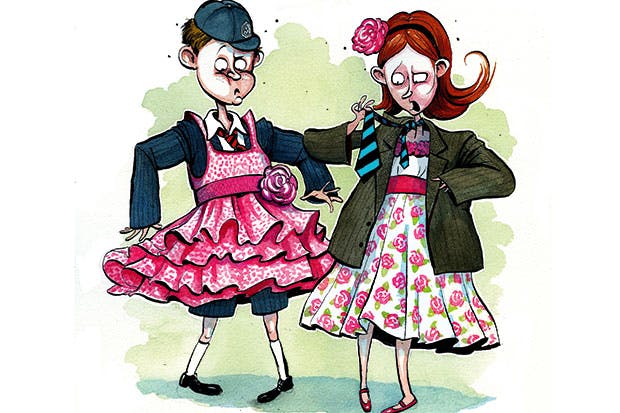Where do you stand on the foster couple who sent their foster son to school in girls’ clothing, aged three, despite express requests from his teachers not to do so, and encouraged him to think of himself as a girl? The same couple had allowed their youngest biological son to do the same age seven, and had taken steps to legally change his – now her – name and passport. However, the child later told a member of staff at school that she did ‘not think life was worth living.’
A third foster child previously in the same couple’s care is also reported as exhibiting ‘gender identity issues.’
The foster parents, whose identity has been kept anonymous, were investigated by Lancashire county council social work service, but at a closed hearing last month in Preston family court, the judge, Mr Justice Williams, dismissed their concerns and ruled that all five of their children – two biological and three fostered – could remain with them. He based his judgement on expert opinion given by a psychologist called Vickie Pasterski. But Pasterski has a potential conflict of interest – she works at the private London Transgender Clinic. In contrast with the NHS, where patient throughput does not lead to an increase in staff income, private clinics directly increase their profits by processing more patients.
‘Social’ transitioning – allowing children to adopt the clothes, names, and social identity of the opposite gender – is not as invasive and potentially irreversible as ‘medical’ transition, which involves hormones and surgery. In the UK, children have to be 17 before they can legally be started on hormone treatment, but hormone blockers can be administered from puberty onwards. Some children enter puberty before they reach their teens.
Even so, social transition is not absolutely free of trauma. If a child’s name has been changed and he/she has adopted the social identity of the other gender, playing sports with them at school and entering into their social set, there will be significant psychological and social implications if they change their mind. And most children diagnosed with suspected gender dysphoria do change their minds. Most studies show the percentage of children who change their mind about being the wrong gender by the time they reach adulthood is around 60 to 80 per cent.
In November 2018, a senior staff member at the NHS Gender Identity Development Service (GIDS) at London’s Tavistock Clinic, raised concerns that some children were not being adequately assessed to ascertain whether they had true gender dysphoria before referral to the adult service for hormone treatment. The anxiety was whether there might be other social or psychological factors that could have led to diagnoses being made inaccurately. Several parents agreed with the concerns raised by the senior staff member, and GIDS launched a review. But little seemed to change, because in February 2019, the governor of the NHS trust which runs the clinic resigned, citing its ‘blinkered’ attitude to doctors who had expressed similar concerns. An Oxford University associate professor of sociology Michael Biggs, has also accused GIDS of suppressing negative results of hormone treatment, and said his own research suggested that after a year of treatment ‘a significant increase’ was found in patients born female who had transitioned to male confiding in staff that they self-harmed.
These fears seem eminently sensible to doctors and laypeople alike. It has been shown that some parents encourage children to change gender when in reality, the children are simply gay. There is no doubt that gender dysphoria exists, and there are people who genuinely and persistently feel as if they are in the wrong body. But since the majority of children with suspected gender dysphoria don’t have the condition once they reach puberty, might it not be more sensible to work on broadening society’s outlook? Allowing children to play with whatever toys they want, or indulging their desire to dress as they wish, without telling them that they are the wrong gender. Let’s change the narrow-minded judgement of ‘male’ and ‘female’ activities before changing our children’s bodies.






Comments